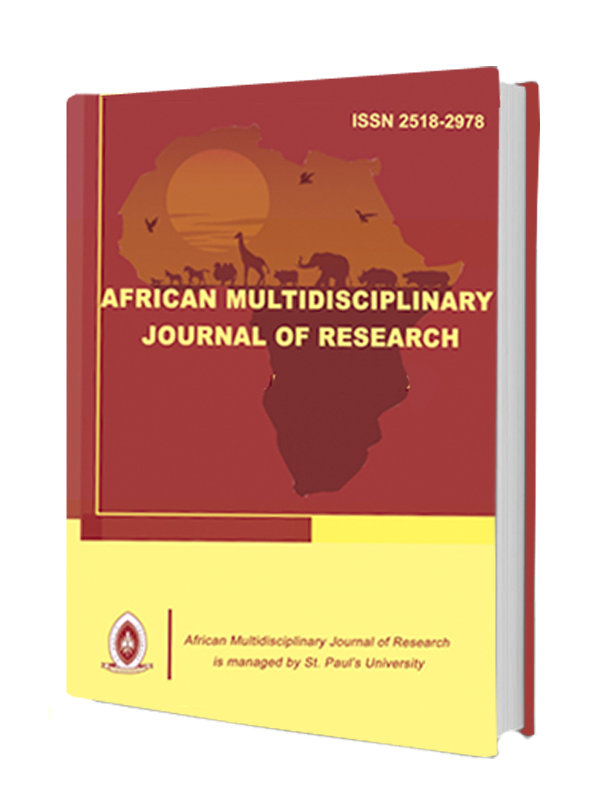An Analysis of Christian Content Creators’ Influence on Ugandan Christian Youth from the Christian Spirituality Perspective
##plugins.themes.academic_pro.article.main##
Abstract
This article examines the influence of Christian content creators (CCCs) on the spirituality of Ugandan youth. The research explores how CCCs influence identity construction and spirituality within a non-Western developing culture. The study focuses on CCCs’ online presence on social media platforms like Facebook and Instagram to gain insights into their strategies for attracting and engaging individuals, particularly the youth, in the digital space. It investigates how CCCs present themselves online, construct their identity, and influence youth spirituality. This influence is evident through their self-descriptions, positive and negative influences, and the question of authenticity. By challenging the perspectives and convictions of their followers, CCCs actively shape their online identity and attract like-minded individuals, thereby fostering para-social relationships.
##plugins.themes.academic_pro.article.details##
References
- Barker, E. (2005). Crossing the boundary: New challenges to religious authority and control as a consequence of access to the Internet. In M. Hojsgaard& M. Warburg (Eds.), Religion and cyberspace (pp. 69). London: Routledge.
- Berger, H., &Ezzy, D. (2004). The Internet as virtual spiritual community: Teen witches in the United States and Australia. In L. L. Dawson & D. E. Cowan (Eds.), Religion online: Finding faith on the Internet (pp. 175–188). New York: Routledge.
- Cheong, P. (2012). Authority. In H. Campbell (Ed.), Digital religion: Understanding religious practice in new media worlds.
- Endean, P. (2011). Karl Rahner and Ignatian spirituality. Oxford University Press.
- Foster, R. J. (2010). Prayer: Finding the heart’s true home. San Francisco, CA: Harper One.
- Goffman, E. (1959). The presentation of self in everyday life. London: Penguin Books.
- Groothuis, D. (1998). Christian scholarship and the philosophical analysis of cyberspace technologies. Journal of the Evangelical Theological Society, 41(4), 633.
- Hannay, J. O. (2003). The spirit and origin of Christian monasticism. Whitefish, Montana: LLC.
- Hartin, P. J. (2015). A window into the spirituality of Paul. Minnesota: Liturgical Press.
- Johnson, L. T. (1990). Faith’s freedom: A classic spirituality for contemporary Christians. Minneapolis: Fortress Press.
- Keating, T. (2008). The heart of the world: An introduction to contemplative Christianity. New York: Crossroad.
- Knowles, D. (1961). The English mystical tradition. New York: Harper and Brothers.
- Lovheim, M., &Lundmark, E. (2019). Gender, religion and authority in digital media. ESSACHESS-Journal for Communication Studies, 12(2), 23.
- Manago, A. M., Graham, M. B., Greenfield, P. M., &Salimkhan, G. (2008). Self-presentation and gender on MySpace.Journal of Applied Developmental Psychology, 29(6), 447.
- McGrath, A. E. (1999). Christian spirituality: An introduction. Malden, MA: Blackwell Publishers.
- McLuhan, M. (1994). Understanding media: The extensions of man. Cambridge: MIT Press.
- McPherson, M., Smith-Lovin, L., & Cook, J. M. (2001). Birds of a feather: Homophily in social networks. Annual Review of Sociology, 415.
- O’Brien, H. (2020). What does the rise of digital religion during Covid-19 tell us about religion’s capacity to adapt? Irish Journal of Sociology, 28, 242.
- Rheingold, H. (1993). The virtual community: Homesteading on the electronic frontier. Reading, MA: Addison-Wesley.
- Schlenker, B. R. (2003). Self-presentation. In M. R. Leary & J. P. Tangey (Eds.), Handbook of self and identity (p. 542). New York: Guilford Press.
- Schneiders, S. (1989). Spirituality in the academy. Theological Studies, 50, 684.
- Sheldrake, P. (1991). Spirituality and history: Questions of interpretation and method. London: SPCK.
- Smith, J. K. A. (2009). Desiring the kingdom: Worship, worldview, and cultural formation. Grand Rapids, MI: Baker Academic.
- Swift, C. (1994). Celtic monasticism: A discipline’s search for romance. The Journal of the Archeological Society, V, 36.
- Tucker, N. (2006). The history of Christian spirituality: The place of prayer. PhD dissertation, The University of Newcastle, Australia.
- Williams, G. (1979). Religion, language, and nationality. In Wales: Historical Essays (p. 1). Wales, GB: University of Wales Press.

